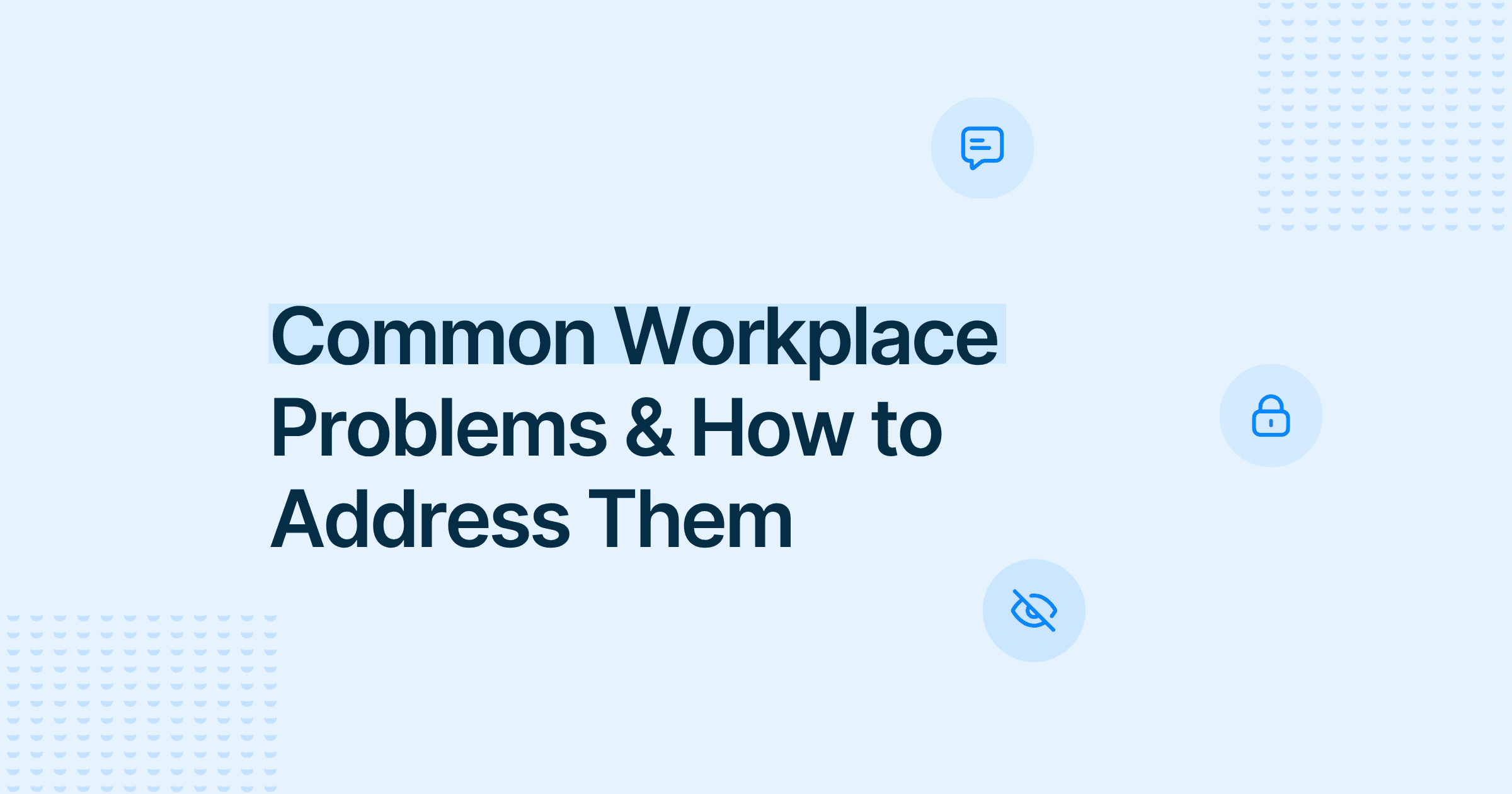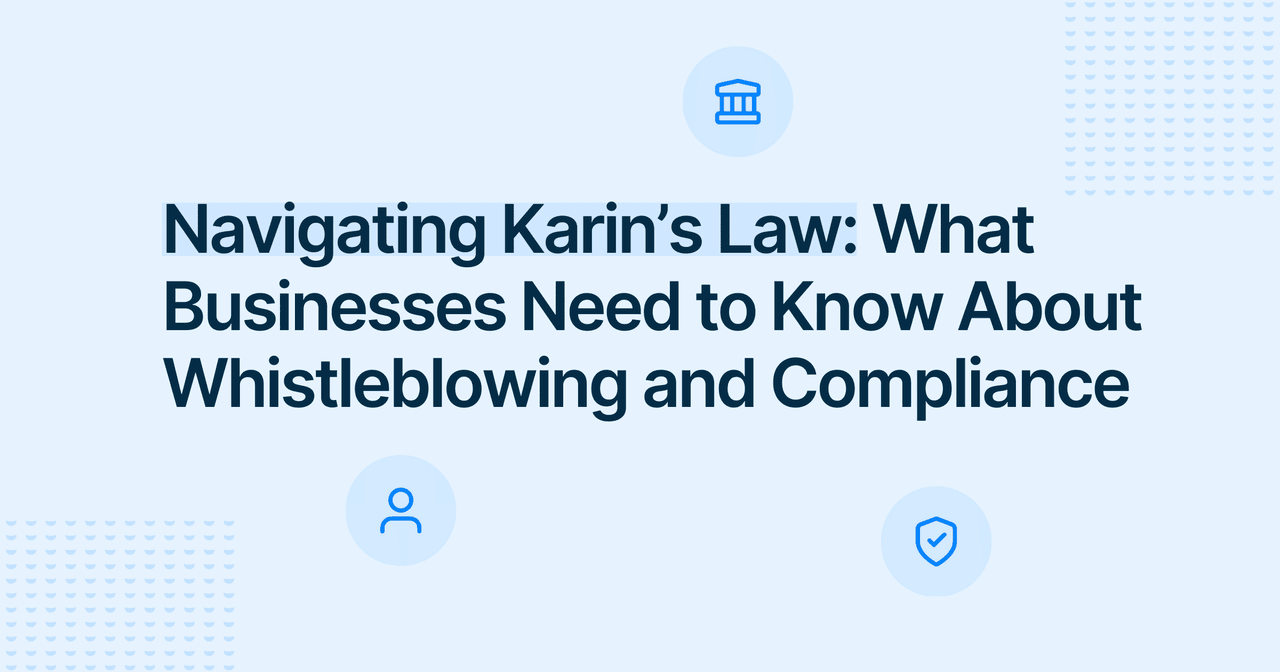



Discover the benefits of a transparent organization!
Try our free platform and strengthen the culture of openness in your team.
Workplace Environment

Yeva Bartkiv
Copywriter
Published
2025-06-30
Reading time
5 min


Table of contents
Subscribe to our newsletter
Even in the most well-intentioned organizations, workplace problems are inevitable. We spend a significant portion of our lives at work, and the dynamics of collaboration, communication, deadlines, and leadership can sometimes generate friction.
Whether you're an HR professional, a manager, or a team member trying to navigate the complex world of workplace challenges, understanding the common issues and knowing how to address them is essential for maintaining a healthy, productive work environment.

Let's take a closer look at the most frequent workplace issues, their root causes, and actionable strategies for resolution.
What It Looks Like
From vague project instructions to emails that spark more confusion than clarity, poor communication in the workplace is a leading contributor to inefficiency and conflict. Communication problems in the workplace can manifest in various forms:
Why It Happens
These breakdowns often stem from differing communication styles, cultural misunderstandings, or simply a lack of structured communication workflows. In remote or hybrid environments, the overuse of tools like Slack without proper communication norms can exacerbate the problem.
How to Fix It
For better employee engagement, every individual must feel heard and understood.
What It Looks Like
Ethical problems, including workplace misconduct, range from favoritism and conflicts of interest to more serious concerns such as sexual harassment or misuse of company resources. Left unchecked, these behaviors can corrode trust and destabilize workplace culture.

Why It Happens
A lack of clear policies, ineffective leadership, or fear of retaliation can prevent employees from speaking up. The onlooker effect often plays a role, where individuals assume someone else will address the issue.
How to Fix It
Read more on the types of misconduct in the workplace
What It Looks Like
From micromanagement to absentee leadership, problems with managers in the workplace can have cascading effects on morale and productivity
Why It Happens
Not all great employees make great leaders. Without proper professional development, many managers struggle with decision-making, delegation, and supporting diverse teams.
How to Fix It
Managers who invest in conflict resolution and problem-solving can better support team members and create a healthier workplace environment.
What It Looks Like
Disengaged employees often do the bare minimum. They rarely participate in team meetings, avoid social interaction, and may struggle with time management or meeting deadlines.
Why It Happens
Lack of motivation may stem from unclear expectations, poor work-life balance, or a toxic company culture. Burnout and a disconnect between personal values and company mission also play major roles.

How to Fix It
What It Looks Like
Frequent resignations and ineffective onboarding processes are clear indicators of underlying problems. New employees often feel unsupported, leading to high turnover and poor employee satisfaction.
Why It Happens
Inadequate training programs, unrealistic job expectations, and lack of support during the first months on the job are common culprits. Without early check-ins and proper integration into workflows, new hires can feel lost.
How to Fix It
A solid start boosts retention, morale, and sets the tone for a productive work environment.
What It Looks Like
Burnout manifests as chronic fatigue, emotional exhaustion, and decreased productivity. When employees feel pressure to always be "on," their personal life suffers, and so does their performance.
Why It Happens
Long work hours, lack of flexible schedules, and blurred boundaries between work and life lead to an unsustainable pace. Poor workplace culture that rewards overwork can further fuel burnout.
How to Fix It
Addressing burnout isn’t just a wellness issue – it’s a retention strategy.
What It Looks Like
Tension may arise when team members have different expectations around feedback, deadlines, or work styles. Teamwork suffers when these differences are not understood or respected.
Why It Happens
As workplaces become more diverse, the need for cultural intelligence increases. Misalignment in values, work habits, and communication expectations can spark misunderstandings.

How to Fix It
Understanding these dynamics is critical for a thriving work environment.
No workplace is immune to challenges. But how an organization responds can make all the difference. By investing in better communication, leadership, and support structures, companies can transform workplace issues into opportunities for growth.
Addressing typical workplace problems isn’t just about ticking boxes – it’s about cultivating a culture where people feel safe, valued, and empowered to thrive.
Whether it’s improving project management, enhancing employee morale, or creating a more inclusive work culture, solutions are within reach.
At FaceUp, we’ve seen how small actions – an open door, a safe space to speak up, a shift in tone – can drive real change. Our tools can help, when you’re ready.
Book a demo to see how FaceUp supports conflict resolution, anonymous reporting, and a healthier workplace culture.




Try our free platform and strengthen the culture of openness in your team.
Keep Reading

Alaa El-Shaarawi2025-12-197 min
Workplace Environment

Marie Roland2025-12-165 min
Whistleblowing

Alaa El-Shaarawi2025-12-087 min
Workplace Environment